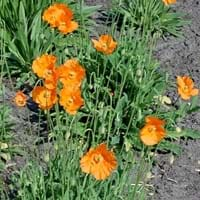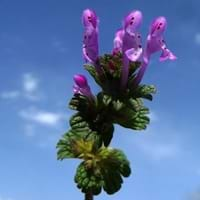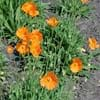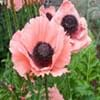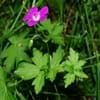Life Span
Perennial
Annual
Type
Flowering Plants
Herbs
Origin
Northern Africa, Morocco
Eastern Europe, Southern Europe, Mediterranean, Northern Africa, Central Asia, Western Asia
Types
Not Available
Not Available
Habitat
gardens, Grassland, Roadsides, tropical environments
Cultivated Beds
USDA Hardiness Zone
6-8
Not Available
Sunset Zone
2b, 3a, 3b, 4, 5, 6, 7, 8, 9, 14, 15, 16, 17, 18, 19, 20, 21, 22, 23, 24
Not Available
Habit
Clump-Forming
Prostrate/Trailing
Flower Color
Orange
Hot Pink, Fuchsia, Violet
Flower Color Modifier
Bicolor
Bicolor
Fruit Color
Not Available
Not Available
Leaf Color in Spring
Light Green, Gray Green
Green, Purple, Gray Green
Leaf Color in Summer
Light Green, Gray Green
Green, Purple, Gray Green
Leaf Color in Fall
Light Green, Gray Green
Green, Purple, Gray Green
Leaf Color in Winter
Not Available
Light Green
Leaf Shape
Egg-shaped
Lobed
Plant Season
Spring, Summer
Spring, Fall, Winter
Sunlight
Full Sun, Partial Sun
Full Sun, Partial Sun, Partial shade, Full Shade
Type of Soil
Loam, Sand
Clay, Loam, Sand
The pH of Soil
Neutral, Alkaline
Acidic, Neutral, Alkaline
Soil Drainage
Well drained
Average
Bloom Time
Late Spring, Early Summer, Summer, Late Summer
Early Spring, Spring, Late Spring, Early Summer, Fall, Late Fall, Early Winter
Tolerances
Not Available
Not Available
Where to Plant?
Container, Ground, Pot
Ground
How to Plant?
Seedlings
Divison, From Rhizomes, Layering, Seedlings
Plant Maintenance
Medium
Low
Watering Requirements
Form a Soil ring to water efficiently, Requires consistently moist soil, Requires regular watering, Water Deeply
Water occasionally
In Summer
Lots of watering
Lots of watering
In Spring
Moderate
Moderate
In Winter
Average Water
Average Water
Soil pH
Neutral, Alkaline
Alkaline, Neutral, Slightly Acidic, Slightly Alkaline
Soil Drainage Capacity
Well drained
Dry
Sun Exposure
Full Sun, Partial Sun
Full Sun, Partial shade
Pruning
Remove damaged leaves, Remove dead branches, Remove dead leaves
Remove damaged leaves, Remove dead branches, Remove dead leaves
Fertilizers
All-Purpose Liquid Fertilizer
Not Available
Pests and Diseases
Red blotch
Not Available
Plant Tolerance
Drought
Not Available
Flower Petal Number
Single
Single
Fragrant Bark/Stem
No
Yes
Foliage Texture
Medium
Medium
Foliage Sheen
Matte
Matte
Attracts
Not Available
Bees, pollinators
Allergy
Skin irritation
Anti-inflammatory, Antimicrobial, Antioxidants, Flavonoids
Aesthetic Uses
Showy Purposes
Beautification, Cottage Garden, Showy Purposes
Beauty Benefits
Not Available
Not Available
Environmental Uses
Air purification
Not Available
Medicinal Uses
Not Available
Antirheumatic, Diaphoretic, Febrifuge, Laxative
Part of Plant Used
Whole plant
Flowers, Leaves, Stem
Other Uses
Culinary use, Employed in herbal medicine, Showy Purposes, Used as Ornamental plant
Used As Food
Used As Indoor Plant
Yes
No
Used As Outdoor Plant
Yes
Yes
Garden Design
Alpine, Mixed Border, Rock Garden / Wall, Wildflower
Edible
Botanical Name
PAPAVER atlanticum
LAMIUM amplexicaule
Common Name
Atlas Poppy, Moroccan Poppy
Henbit, Henbit Deadnettle
In Hindi
मोरक्को के पोस्ता
henbit deadnettle
In German
marokkanische Poppy
henbit deadnettle
In French
Poppy marocaine
henbit deadnettle
In Spanish
marroquí amapola
deadnettle henbit
In Greek
μαροκινή παπαρούνας
αυλακόχορτου deadnettle
In Portuguese
Moroccan Poppy
henbit deadnettle
In Polish
marokański Poppy
Henbit jasnota
In Latin
Moroccan Poppy
henbit deadnettle
Phylum
Magnoliophyta
Magnoliophyta
Class
Magnoliopsida
Magnoliopsida
Order
Ranunculales
Lamiales
Family
Papaveraceae
Lamiaceae
Clade
Angiosperms, Eudicots
Angiosperms, Asterids, Eudicots
Tribe
Not Available
Not Available
Subfamily
Paperveroideae
Not Available
Importance of Papaver atlanticum and Henbit Deadnettle
Want to have the most appropriate plant for your garden? You might want to know the importance of Papaver atlanticum and Henbit Deadnettle. Basically, these two plants vary in many aspects. Compare Papaver atlanticum and Henbit Deadnettle as they differ in many characteristics such as their life, care, benefits, facts, etc. Every gardener must at least have the slightest clue about the plants he wants to plant in his garden. Compare their benefits, which differ in many ways like facts and uses. The medicinal use of Papaver atlanticum is Not Available whereas of Henbit Deadnettle is Antirheumatic, Diaphoretic, Febrifuge and Laxative. Papaver atlanticum has beauty benefits as follows: Not Available while Henbit Deadnettle has beauty benefits as follows: Not Available.
Compare Facts of Papaver atlanticum vs Henbit Deadnettle
How to choose the best garden plant for your garden depending upon its facts? Here garden plant comparison will help you to solve this query. Compare the facts of Papaver atlanticum vs Henbit Deadnettle and know which one to choose. As garden plants have benefits and other uses, allergy is also a major drawback of plants for some people. Allergic reactions of Papaver atlanticum are Skin irritation whereas of Henbit Deadnettle have Anti-inflammatory, Antimicrobial, Antioxidants and Flavonoids respectively. Having a fruit bearing plant in your garden can be a plus point of your garden. Papaver atlanticum has no showy fruits and Henbit Deadnettle has no showy fruits. Also Papaver atlanticum is not flowering and Henbit Deadnettle is not flowering . You can compare Papaver atlanticum and Henbit Deadnettle facts and facts of other plants too.
